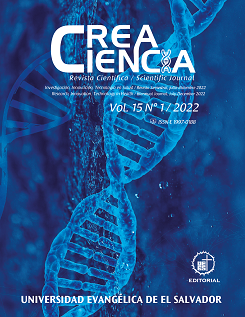Level of knowledge of mothers of children aged 5-9 years about the importance of first permanent molars, 2022
DOI:
https://doi.org/10.5377/creaciencia.v15i1.15710Keywords:
Rash, knowledge level, first permanent molar, primary molarAbstract
The objective of this study was to identify the level of knowledge that mothers of children between 5 and 9 years old have regarding the eruption and importance of the first permanent molars according to sociodemographic factors, taking into account the established ethical criteria and norms. The focus of the study is quantitative, cross-sectional descriptive type. The sample consisted of 245 mothers of children from 5 to 9 years old. The type of sampling is for convenience; the technique used was a survey, and the instrument was the questionnaire, which was validated by dental professionals in the area of pediatric dentistry, public health and
investigation. The results indicate that 42.4% of the mothers know what the first permanent molar is. 60.8% consider that if the first permanent molar is extracted it will not come out again. 65.7% mention that the first permanent molar is not the same as the first primary molar. 7.8% know the location in the mouth of the first permanent molar. 32.7% affirm that the loss of the first permanent molar does affect their child. In conclusion, the level of knowledge of mothers about the importance of the first permanent molar and the consequences of its premature loss is intermediate. The mothers who showed better or greater knowledge are between the ages of 25 and 34, with a high school education level and economic income of $250.00 to $350.00 dollars.
Downloads
564
pdf 117
Downloads
Published
How to Cite
Issue
Section
License

This work is licensed under a Creative Commons Attribution-NoDerivatives 4.0 International License.
© Crea Ciencia
Declaration of originality and assignment of rights
The article must be sent with a declaration of originality, responsibility and assignment of rights of copy of the manuscript, scanned and signed by the author or by one of the authors when the authorship is collective (designated author), stating that the text has not previously published in printed or electronic format, which will not be presented to any other media before knowing the decision of the journal Crea Ciencia and that, if accepted for publication, the authors transfer the copyrights in all forms and media known. At the end of six months of the publication, the text can be shared in another magazine citing the first version of the article published in Crea Ciencia and recording its number and volume. If the article is not published, the UEES agrees to return the rights enunciated to their authors.

Crea Ciencia articles are published in open access and licensed under a Creative Commons Attribution-NonCommercial 4.0 International License.

